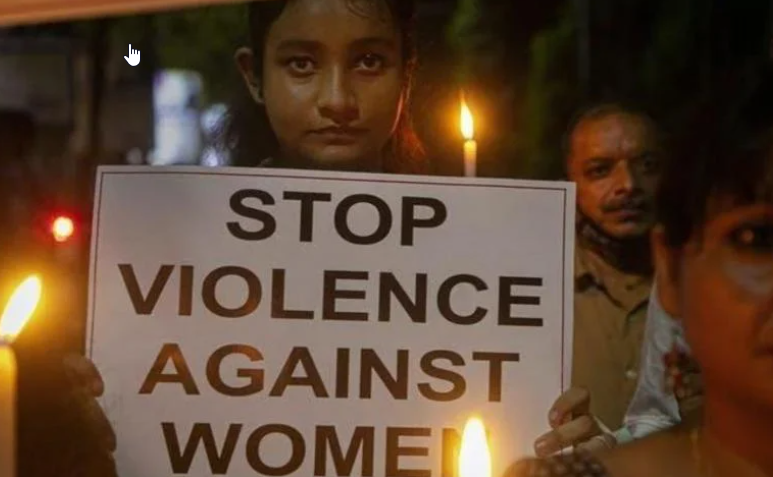Violence Against Women in India
Violence against women in India is a pervasive issue that affects women across all social, economic, and cultural backgrounds. It includes various forms of gender-based violence, such as domestic violence, sexual assault, acid attacks, honour killings, and trafficking. Despite legal protections and awareness campaigns, the problem persists, deeply rooted in patriarchal norms and societal structures.
Forms of Violence
- Domestic Violence: Domestic violence, including physical, sexual, emotional, and economic abuse, is widespread in India. The National Family Health Survey (NFHS-4) 2015-16 revealed that 30% of women aged 15-49 experienced physical violence, and 6% experienced sexual violence from their spouse.
- Sexual Assault: Sexual assault, including rape, molestation, and harassment, is a significant concern in India. According to the National Crime Records Bureau (NCRB), 32,033 cases of rape were reported in 2019. However, many cases go unreported due to social stigma and lack of support for survivors.
- Acid Attacks: Acid attacks, primarily targeting women, are a horrific form of violence in India. Perpetrators often use acid as a weapon to disfigure and traumatize victims. The Acid Survivors Foundation India (ASFI) estimates that there are 250-300 acid attacks annually in the country.
- Honour Killings: Honour killings, where women are murdered by family members for perceived transgressions of social norms, such as marrying against family wishes or engaging in relationships outside the community, remain a problem in parts of India. The NCRB recorded 24 cases of honour killings in 2019, but the actual number is likely much higher.
- Trafficking: Women and girls in India are vulnerable to trafficking for sexual exploitation, forced labour, and domestic servitude. The United Nations Office on Drugs and Crime (UNODC) estimates that India has millions of trafficking victims, with a significant proportion being women and children.
Contributing Factors
- Patriarchal Norms: India’s deeply entrenched patriarchal norms, which prioritize men’s authority and control over women, contribute to the persistence of violence against women. These norms manifest in various forms, such as son preference, strict gender roles, and the devaluation of women’s autonomy and rights.
- Economic Inequality: Women’s economic dependence on men and limited access to education, employment, and resources make them more vulnerable to violence and less able to escape abusive situations.
- Lack of Legal Enforcement: Despite the existence of laws to protect women, such as the Protection of Women from Domestic Violence Act (2005) and the Criminal Law (Amendment) Act (2013), their implementation remains weak. Inadequate police response, long legal processes, and low conviction rates deter women from seeking justice.
- Social Stigma and Victim Blaming: Social stigma surrounding violence against women, particularly sexual violence, often leads to victim-blaming attitudes and discourages women from reporting crimes or seeking support.
Government Initiatives and NGO Efforts
- Legal Reforms: The Indian government has enacted several laws to address violence against women, such as the Sexual Harassment of Women at Workplace (Prevention, Prohibition and Redressal) Act (2013) and the Protection of Children from Sexual Offences (POCSO) Act (2012).
- Awareness Campaigns: The government and NGOs have launched various awareness campaigns to challenge patriarchal norms, promote gender equality, and encourage reporting of violence. Notable campaigns include “Beti Bachao, Beti Padhao” (Save the Daughter, Educate the Daughter) and “Bell Bajao” (Ring the Bell).
- Support Services: NGOs and government agencies provide support services for survivors of violence, including helplines, shelters, legal aid, and counseling. The National Commission for Women (NCW) and the Ministry of Women and Child Development (MWCD) play a crucial role in coordinating these efforts.
- International Collaborations: India has ratified international conventions, such as the Convention on the Elimination of All Forms of Discrimination Against Women (CEDAW), and collaborates with United Nations agencies and international NGOs to address violence against women.
The Way Forward
Addressing violence against women in India requires a multi-faceted approach that targets patriarchal norms, ensures effective legal enforcement, provides support for survivors, and promotes women’s empowerment. Key steps include:
- Challenging Gender Stereotypes: Sustained efforts are needed to challenge gender stereotypes and promote gender equality through education, media, and community engagement.
- Strengthening Legal Frameworks: Legal frameworks must be strengthened to ensure swift and certain punishment for perpetrators, provide better protection for survivors, and address emerging forms of violence, such as online harassment.
- Improving Support Services: Comprehensive support services, including medical care, legal aid, and psychosocial support, must be made accessible to all survivors of violence, particularly those from marginalized communities.
- Empowering Women: Initiatives to promote women’s economic empowerment, education, and political participation are crucial to reducing their vulnerability to violence and enabling them to assert their rights.
- Engaging Men and Boys: Engaging men and boys as allies in the fight against violence against women is essential for challenging patriarchal norms and promoting gender equality.


